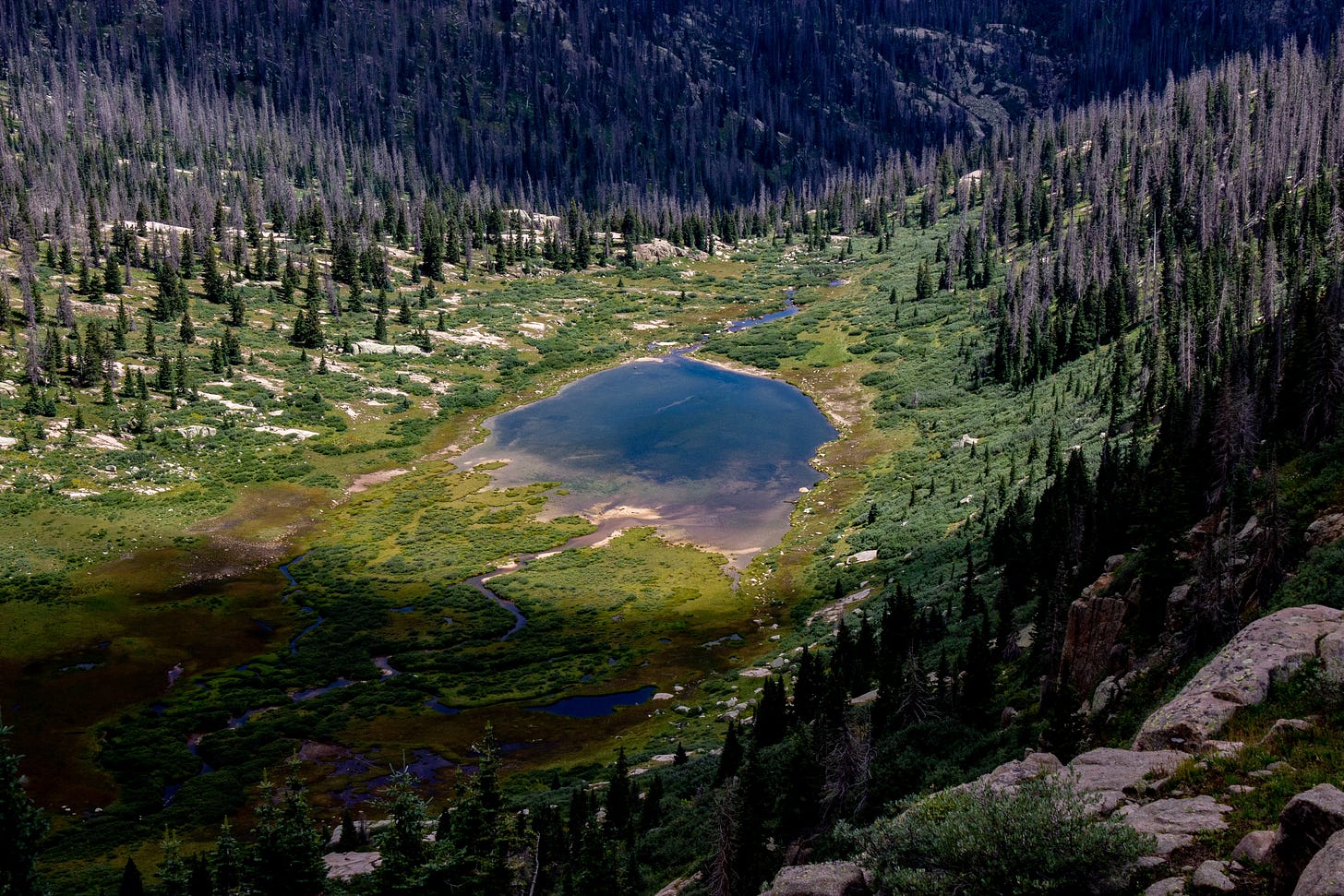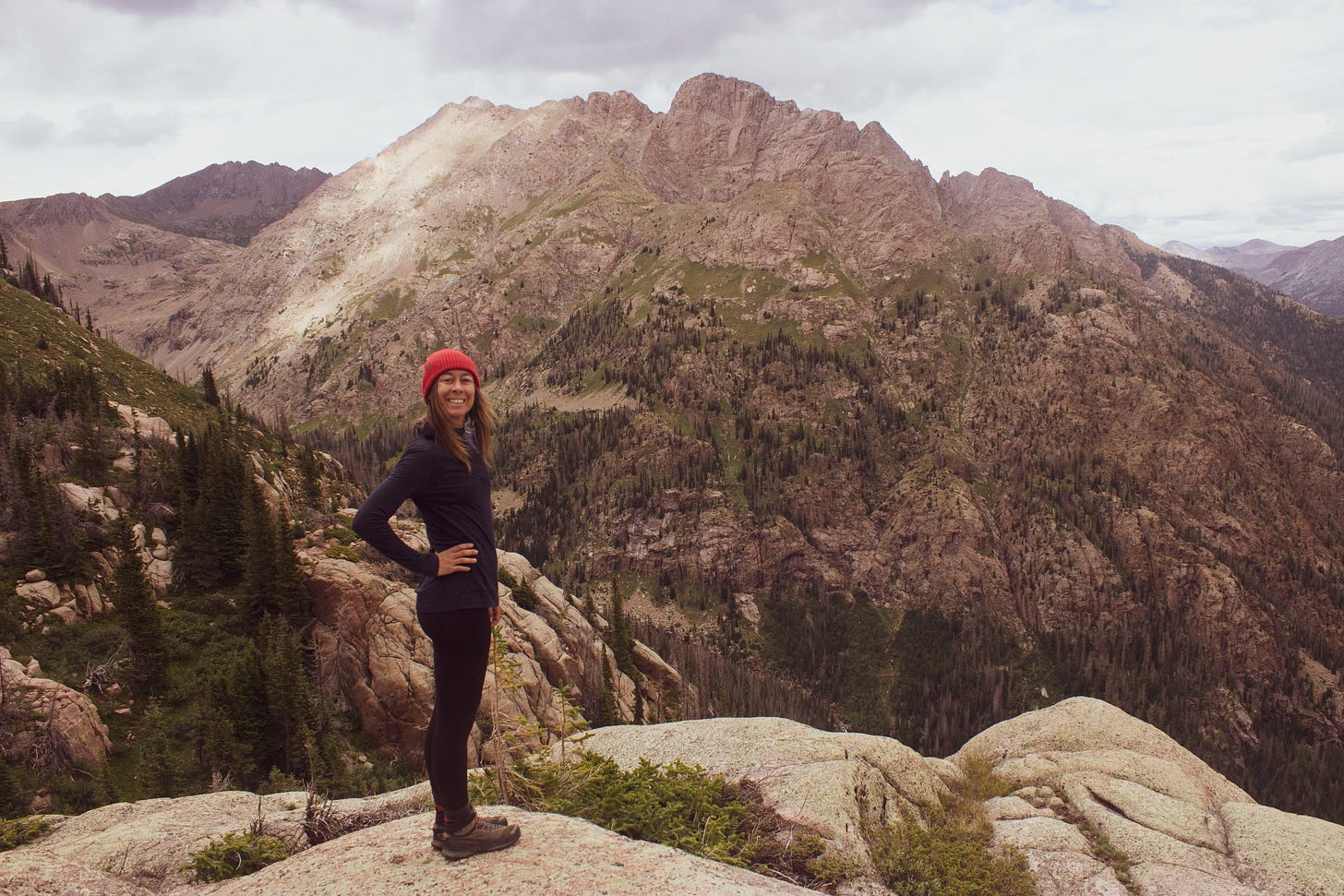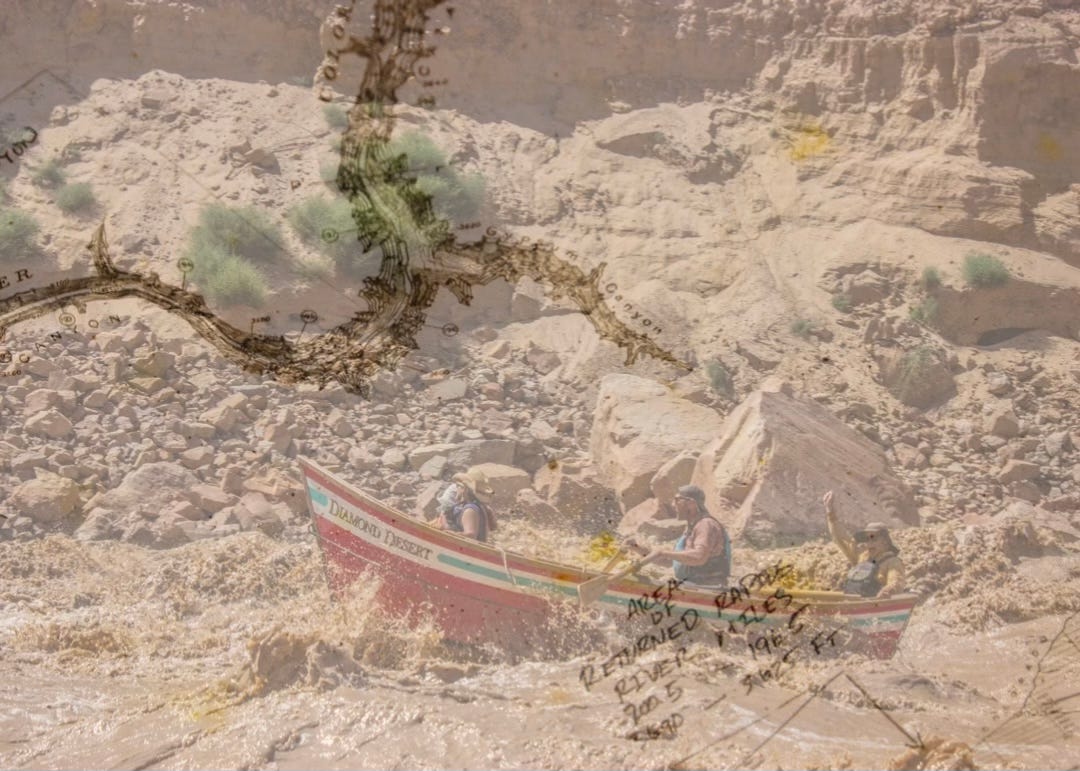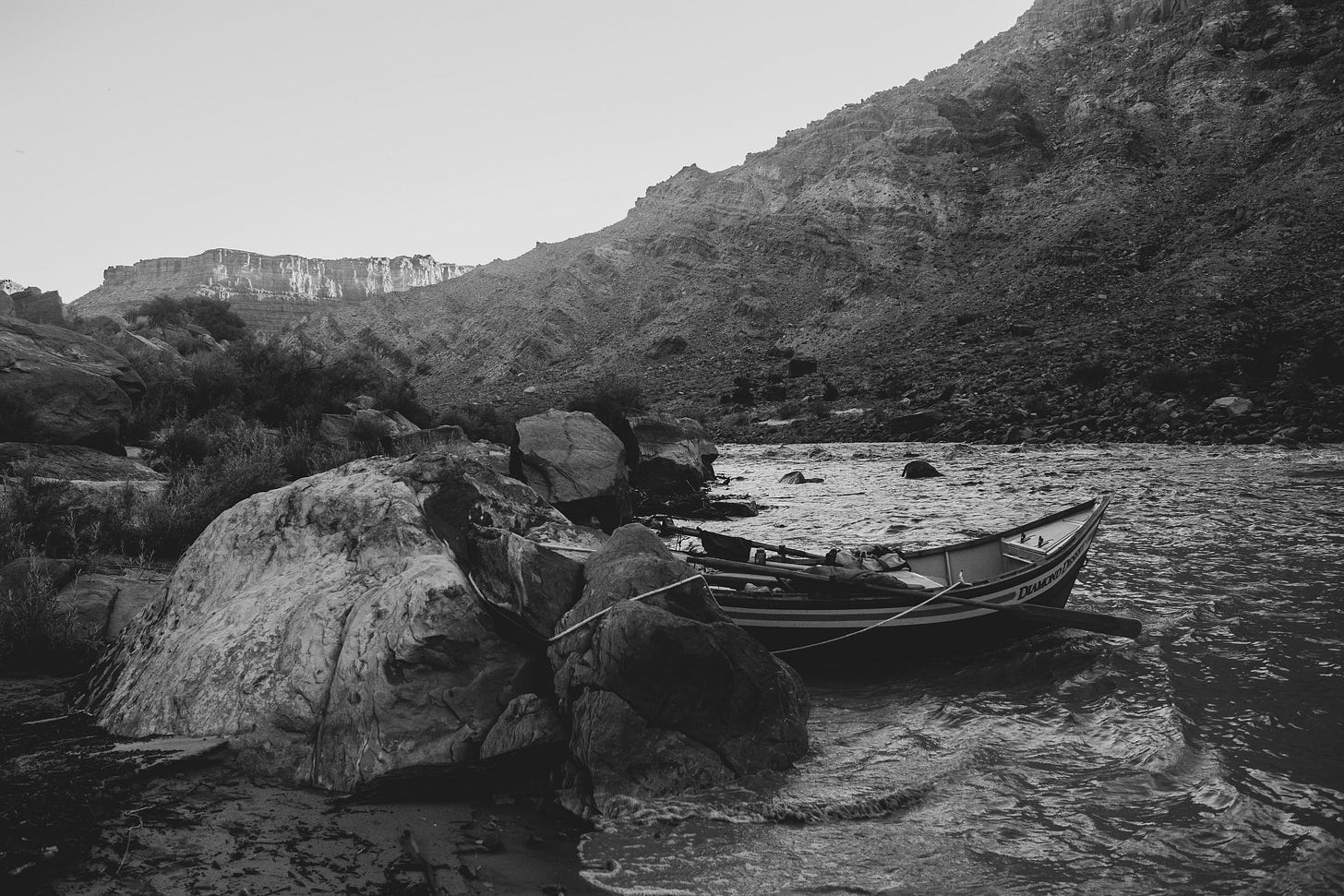A Personal Watershed Restoration Project
Notes from a month splashing like a droplet around the upper Colorado River Basin
Snowmelt, spring flows, and monsoonal moisture join forces to roll off the San Juan Mountains into the el Rio de las Animas Perdidas (River of Lost Souls). Certain I lost a piece of mine in this wild and unforgiving range, I returned this summer with a personal restoration project in mind. For years, my perspective of this landscape has been shaped by a past that I sloughed off.
For much of the trip, Aaron and I hovered above treeline in the 11,000-13,000 foot range. In these craggy split wide open vegetation-sparse areas, mountain ranges begin to resemble the desert. Often with greater severity. Thunder cells clap against peaks and reverberate through valley echo chambers. As do the howls of alpine coyotes. The thin air catches and refracts light divinely, but lets go of all heat the moment the sun dips below the horizon. And dehydrated beans take on a second life in your belly.
The allure of the high country’s extreme beauty is that it cannot hold you. Only seduce you higher and later haunt you as you descend into the mortal realms of thick air and tree canopy shelter in the lowlands of say 9,000 feet. I cannot say my vision in this landscape was restored in any way, but the pilgrimage felt nonetheless necessary. I can see more clearly what I struggled to put into meaning when this Wilderness was my part-time backyard.
Like the land itself, water is incredibly powerful in its ability to shift course and regenerate life. And like the water droplets slipping away, the peaks could not hold on to me for long—a flashing creek flushed me downstream back to the Colorado River. 1 This was a good omen because I hatched a plan to float home on it…
I’ve been bobbing, thrashing, and tumbling like driftwood down the Colorado River system for years. I once existed like spring runoff in the San Juan Mountains––forever running toward the desert. The result has been more patina and water polish than roots. Some of us are not meant to stay put or be built into boxes—we are crafted into vessels or spread out like maps. We are the ones that fit into the river system untethered and unbound, our unfixed place is shaped by water and space.
When the Colorado River dips into the guts of Gypsum Rapid it spews its muddy entrails into thin desert air. The scene is one of delightful resistance in Cataract Canyon where the latest section of the Colorado River is recovering from inundation by Lake Powell. For over half a century, the once-notorious rapids of Cataract lay dormant under slothish reservoir water. Now, after two decades of drought and natural flood events, the river is re-emerging and with it some of the largest waves in the entire river system.
A group of river lovers known as Returning Rapids has been riding the wave train of this remarkable recovery. With the support of Glen Canyon Institute, Returning Rapids collaborates with scientists, researchers, media, boaters, and shareholders to document and study these changes. This August, the groups teamed up with Holiday River Expeditions to bring together people from across the country who are invested in or curious about the future of the Colorado River.
I got to be a writer fly hanging on to the walls of the dory while soaking in the myriad perspectives swirling around our flotilla: insights from geologist Brenda Bowen decoded shifting sediment layers, Returning Rapids founders Mike DeHoff and Meg Flynn about the ever-changing whitewater, and Glen Canyon Institute Executive Director Eric Balken’s infatuation with the returning cottonwood and box elders as side canyons recover. The devotion of the Holiday guides to the river, and our experience, was the best in the business.2
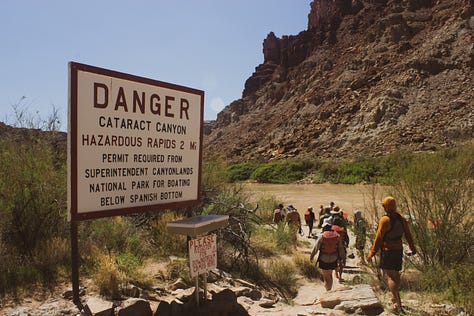
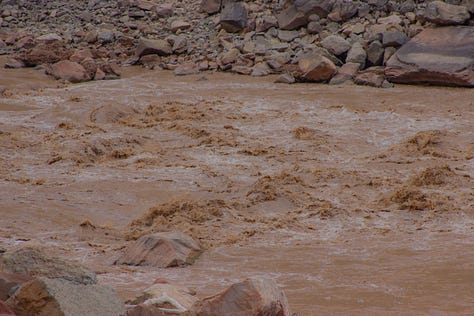

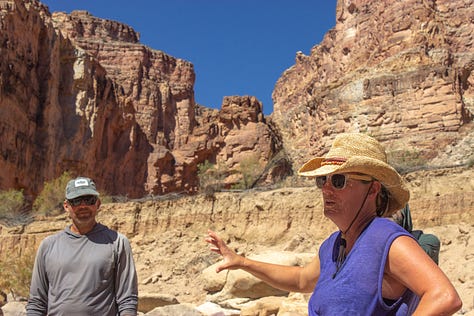
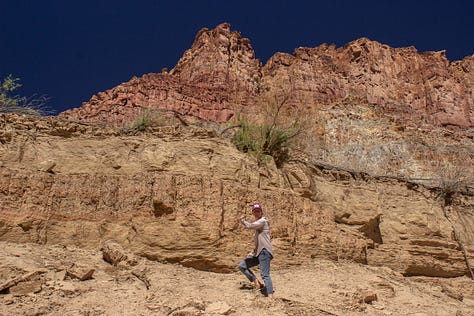
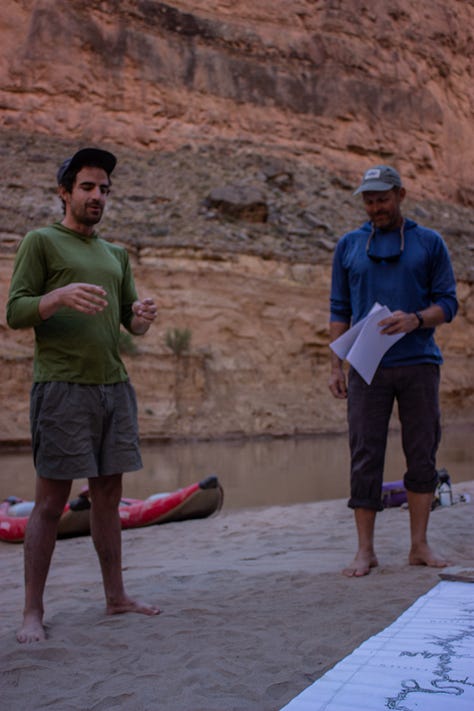


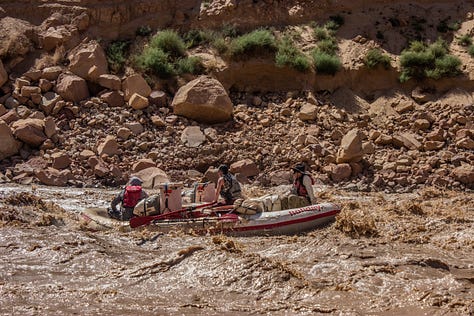
The Colorado River moves mountains, and the desert, across the West. Each wave in Cataract Canyon offers a glimpse of how a healthy river system enacts such a miracle. Against much resistance––from dams, sediment, bureaucracy––the Colorado River is a current of hope.
True story: Aaron and I were trying to nap in the truck when a raging storm unleashed in our drainage. Our getaway was only marginally safe but proved to be the right move when the area had a full road closure a few minutes later.
Joining this trip was made possible by a research grant from the BYU Redd Center for Western Studies as part of a larger river project I am deep in the keeper pothole with.






